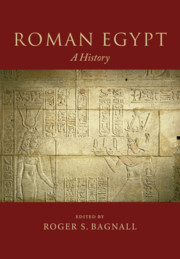Book contents
- Roman Egypt
- Roman Egypt
- Copyright page
- Contents
- Illustrations
- Maps
- Boxes
- Contributors
- Preface
- Chronology
- Maps
- 1 Laying the foundations for Roman Egypt
- 2 The coming of Roman rule
- 3 Development and crisis in a Roman province
- 4 The making of Late Antique Egypt
- 5 Divergence and division
- 6 The Persians, the Arab conquest, and another transformation of Egypt
- Epilogue
- Glossary
- Bibliography
- Index
5 - Divergence and division
Published online by Cambridge University Press: 19 August 2021
- Roman Egypt
- Roman Egypt
- Copyright page
- Contents
- Illustrations
- Maps
- Boxes
- Contributors
- Preface
- Chronology
- Maps
- 1 Laying the foundations for Roman Egypt
- 2 The coming of Roman rule
- 3 Development and crisis in a Roman province
- 4 The making of Late Antique Egypt
- 5 Divergence and division
- 6 The Persians, the Arab conquest, and another transformation of Egypt
- Epilogue
- Glossary
- Bibliography
- Index
Summary
Although Egypt in the fifth century was highly integrated into the empire, it also began to develop new elements of distinctiveness. In part this trend resulted from divisions in theology and church politics that emerged around the Council of Chalcedon in 451, leading to deep splits in the church by the middle of the sixth century and the creation of competing church hierarchies. The native Egyptian language came to have its own literature and began to be used more widely in official contexts. At the same time, Alexandria remained a vibrant center of Greek culture, which permeated the rest of Egypt as well. The economic and social elite of the cities, increasingly closely tied to the imperial administration, concentrated wealth and power in their hands to a degree not seen earlier, even as most of the population continued to live in villages and work the land.
- Type
- Chapter
- Information
- Roman EgyptA History, pp. 225 - 275Publisher: Cambridge University PressPrint publication year: 2021

